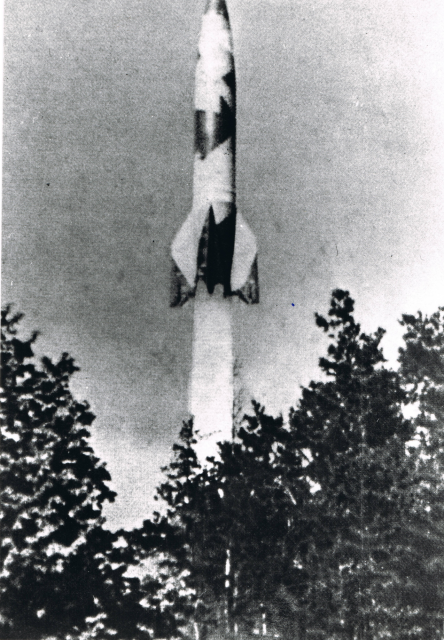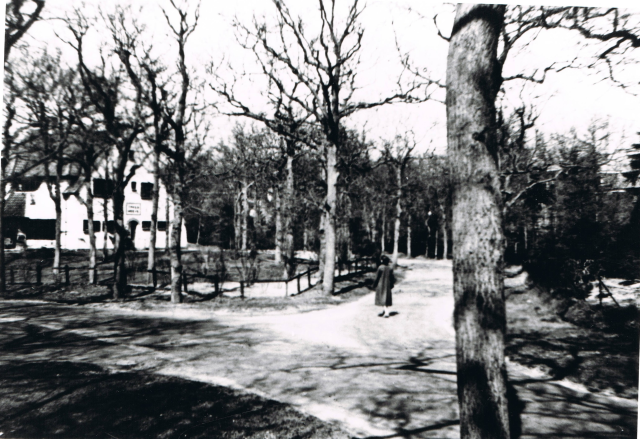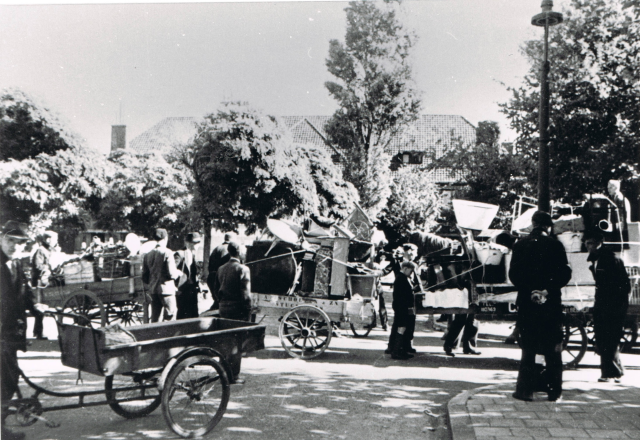V2 launch site Wassenaar
What happened at this site on Sept. 8, 1944?
In the evening of September 8, 1944, the inhabitants of Wassenaar received the fright of their lives. On this beautiful summer evening, just after 6:30 p.m., a deafening roar and roar sounded above the village. Since no one knew where the sound came from, panic broke out among the population. People fled in terror under tables, stairs and in basements. Store personnel took cover behind counters and those in the streets dropped flat to the ground. Those who looked in the direction of the sound saw, to their dismay, two long projectiles with a tail of fire rising straight up, leaving a winding white streak, and disappearing at a great height with tremendous speed in a westerly direction. These fired projectiles with explosive charges were the first rockets fired by the Germans from the Netherlands. With these launches, a new offensive against England had begun with a weapon the Germans called Vergeltungswaffe 2, or V-2. A rocket had been launched from the Lijsterlaan, which would crash into Stavely Road in London five minutes later. Almost simultaneously, a second V-2 was launched from the intersection Koekoekslaan with Schouwweg. The result of the first rocket: two dead and twenty wounded.


The V-2
The development of the new weapons, later called the V-weapons, was a logical consequence of the technological race that was in full swing in World War II. The goal was to use cross-flight weapons and ballistic missiles to take out strategically important targets far into enemy territory. The V-1 was an unmanned jet aircraft with a reasonably heavy bomb on board that went off at high speed toward its target area with a preset direction and flight time. Beginning in mid-June 1944, V-1s were fired from the various launch pads at England, and later Antwerp. The V-2 was a ballistic missile, also with explosive charge, launched vertically from a movable platform. The V-2 was also not steerable but had to travel a certain ballistic trajectory based on tuned data. Because both the V-1 and the V-2 could not be aimed with sufficient precision, the main purpose of the deployment was to demoralize the enemy population. And conversely to give some encouragement to their own citizens. After all, with their bombing of German cities, the Allies had also aimed at undermining the morale of the German population. Hence the V of Vergeltung (=retaliation).

Eviction of half of Wassenaar
The Germans had Wassenaar-Zuid cleared in order to keep prying eyes and possible saboteurs away and to have their hands free. Since everyone understood that the British Royal Air Force would come with answers, the following order was obeyed en masse.


Dismay in England
The strikes of two V-2 rockets from Wassenaar near London in September 1944 caused great unrest in England. Another new, unknown threat. And what else was Hitler up to? In June 1944 the British had already been startled by the V-1, the first Weapon of Retaliation. Experience showed that there was still something to be done about that. It could be done by shelling them with anti-aircraft fire. It could also be done by deploying fast planes that shot down the V-1 or caused them to change course by a push against one of the small wings. The most effective solution was to track down the V-1's 60-meter-long launch sites on the continent and eliminate them with bombing. Moreover, many launch sites were disabled during the Allied advance through France and Belgium. Just when, after Brussels, Antwerp was also conquered, the V-2 came like a jack-in-the-box. The first impacts were still packaged by British censors as a gas explosion, but with the steady stream of V2s, the threat could no longer be denied. And the lack of effective defenses made that even more difficult. After all, a ballistic missile "falls from the sky" without warning: there was nothing to be done about it.
The resistance in Wassenaar
Wassenaar played a crucial role in those weeks of September 1944. First of all, of course, because from there the V-2s were launched. The resistance managed to pass on the times and places of launching to London remarkably quickly and accurately. Of enormous importance was also the fact that some very knowledgeable resistance people knew how to gather important information and signal it to London.
Under the utmost secrecy, the Germans managed to carry out the supply and launch of the V-2s. The necessary vehicles were parked under the shelter of trees. Within a short time a clearing in the forest could be chosen. It did not require much, other than a stable horizontal surface. Then the rocket was prepared and launched. Within minutes, so to speak before the rocket exploded a few minutes later in England, the launch site was deserted.
For reasons of secrecy, on Monday, September 9, the day after the first launch, the Germans had already ordered the evacuation of Wassenaar-Zuid. The fewer potholes, the better. Telegraphist Rob de Brauw, having been parachuted from England between Driebergen and Leersum in August, had found shelter on the Buurtweg. That street also had to evacuate and so he ended up in the Marlot district of The Hague. From England he received many questions about the V2. De Brauw had come into contact with the resistance group Peggy. This had many eyes and ears in Wassenaar, so that the Royal Air Force conducted a photo reconnaissance of Wassenaar just one day later.
The RAF attacks the V-2 in Wassenaar
The evacuation of Wassenaar-Zuid was completed on Sunday, September 12, intelligence in England learned. To clear the way for later bombing of the sites where the V-2s and the vehicles were hidden, the RAF went into action with 32 fighter-bombers as early as Wednesday, September 13, at the direction of the intelligence service, and attacked the anti-aircraft guns in Wassenaar with board guns.
Wassenaar, because of its various leafy estates, remained an ideal place for the unseen collection, assembly and firing of V-2s. As a result, the Allies searched diligently for these hard-to-find spots by all sorts of means. This led to frequent shelling and bombing in the months that followed. Dozens of civilians, residents of Wassenaar and passers-by, were killed and hundreds were wounded.
The sad finale was the Allied bombardment that was intended for the Haagse Bos, but hit the Hague residential district of Bezuidenhout (March 3, 1945). By the end of March 1945, the men of the V-2s were ordered to return to Germany with the remaining missiles. The chance that the advancing Allies would seize the rockets had become too great.
Trial launch (black and white checkered)
https://www.youtube.com/watch?v=neS5CLRKiBoTrial launch after German capitulation
trial launch after German capitulation more detailed explanation
V2 Chiswick Road, London
V2 Chiswick Road, London
Britons search for launch site in Wassenaar